Introduction
As a small business owner in rural Alberta, you know finding ways to cut costs without compromising quality or efficiency is crucial to long-term success. Whether you are a seasoned entrepreneur or just starting your small business journey, it is important to have a budget and stick to it. Now that the new year has begun, it is the perfect time to refine budgeting strategies and explore innovative ways to minimize business costs. Let’s delve into the business budgeting process and check out some practical ways small businesses can keep their costs down in 2024.
The Importance of Business Budgeting
A business budget is the ultimate tool in keeping business costs down. It is a plan that assists in managing and tracking your finances. So, before we explore additional potential cost-saving strategies, let's touch upon the fundamentals of business budgeting.
For small business owners, having a budget is crucial. It lets you understand your total income, monitor expenses, and establish financial goals. Moreover, it provides opportunities to boost revenue, identifies areas for spending cuts, and helps foresee and plan for slow periods.
An effective business budget will utilize data from previous years along with industry trends to predict future performance. First-year business owners won’t have previous years to draw upon, so market research is essential to predict sales volume, startup costs, and variable expenses.
Creating a business budget goes beyond formality; it's a fundamental aspect of successful business management. A well-crafted budget offers a clear understanding of profit margins, identifies areas for improvement, and sets the stage for long-term success. Even if your business has thrived without a budget so far, creating one allows you to make better-informed decisions, set goals, and adapt to changing circumstances.
What Should Your Budget Include?
A comprehensive business budget should encompass revenue projections, fixed and variable operating expenses, one-time expenses, taxes, debt service, a contingency fund, and capital expenditures. Additionally, it should allocate resources for employee compensation, marketing and advertising, research and development, training, utilities, insurance, professional fees, travel, software, and miscellaneous expenses.
That probably sounds a bit intimidating! Don’t worry. Here at Community Futures Wild Rose, we offer a few different financial planning tools and templates for your business in our resources section. Additionally, HubSpot has a great article going more in-depth about types of business budgets and offers a few free Business Budget Templates that you can download. Another site that offers business budget information and templates, is Intuit.
5 Useful Ways to Cut Costs
Now that we've covered the basics of business budgeting, let's explore five useful ways small businesses can keep costs down.
1. Identify and Minimize Unnecessary Spending
The first step in cost-cutting is to conduct a thorough examination of your company's spending habits (which you probably do when preparing a business budget). Identify and eliminate any unnecessary expenses that may have crept into your budget over time. Evaluate production processes to identify areas where costs can be reduced without compromising quality. Look for opportunities to streamline operations and negotiate better deals with suppliers. By minimizing production expenses, you can significantly impact your overall cost structure.
2. Embrace Technology for Efficiency
In the digital age, leveraging technology can be a game-changer for small businesses. Investing in cost-effective software solutions can automate repetitive tasks, enhance communication, and improve overall efficiency.
Many of these great tools are free, so learning how to use them is often the only investment! For example, free sites such as Canva and Mailchimp can easily take your digital marketing to the next level. Free cloud-based tools such as Google Workspace are built to be user-friendly and can streamline collaboration among team members often reducing the need for physical infrastructure.
Advertising is a prominent example of how technology can save small businesses money. Establishing an online presence through a website, newsletter, and social media channels can yield substantial benefits. Social media platforms can reach a larger audience than traditional advertising methods - often for free!
By embracing technology, small businesses can cut costs while staying competitive in their respective industries.
3. Research and Evaluate Vendors
Carefully evaluate your relationships with suppliers and vendors. For small businesses, fostering strong ties with dependable vendors can result in improved pricing, extended payment terms, and long-term cost savings. Ensure optimal deals on goods and services through regular reviews, negotiating bulk purchase discounts, and exploring alternative suppliers with more favourable terms. Periodically reassess vendor partnerships to align with cost-cutting goals. Ultimately, investing time in building vendor relationships can lead to substantial long-term cost savings.
4. Invest in Your Employees
While it may seem counterintuitive, investing in your employees can be a strategic approach to cost reduction. Well-trained and motivated employees are more efficient, productive, and likely to contribute positively to your company's success. Provide ongoing training to enhance their skills. This can lead to improved job performance and reduced errors. Encourage a positive work environment to boost employee morale, reducing turnover and associated hiring costs. Remember, a satisfied and skilled workforce is a valuable asset in achieving long-term cost savings.
5. Get Expert Advice
Your employees are a valuable resource when it comes to identifying cost-saving opportunities. Hold regular brainstorming sessions to gather input and ideas from your team members. Employees working in various roles may have unique insights into processes that can be optimized.
Additionally, consider seeking professional advice from consultants, mentors, or other industry experts. Bringing in a professional can provide an external perspective, identifying potential cost-saving measures that may not be apparent from within the organization. Mentors, in particular, cultivate one-on-one relationships to offer tailored advice on business development, marketing plans, financial projections, and various aspects of running your business.
Important Note:
When looking for areas to cut costs, it is imperative to avoid cost-cutting measures that negatively impact your employees. As a small business owner, you know the strength of your business heavily relies on building a supportive team. So you should treat your team as your most valuable asset. Remember your employees are part of your community and, in most cases, even part of your direct customer base.
While reducing hours, benefits, or wages might seem like a quick solution to saving money, it is not a sustainable or effective strategy for propelling your business forward. Cultivate loyalty to your employees to maintain a thriving and interconnected business environment.
Conclusion
In conclusion, navigating the economic landscape as a small business owner in rural Alberta requires a strategic approach to cost management. Budgeting is an essential component of business management that cannot be overlooked. Beyond the fundamentals of budget creation, this article has outlined five practical ways for small businesses to keep costs down in the coming year. These strategies can help small businesses cut costs while fostering a resilient and interconnected business environment. To build a financially sound venture, entrepreneurs should create a budget plan and implement practical strategies to manage costs.
Make Community Futures Wild Rose part of your plan for success in 2024. We offer flexible business loans, expert guidance, and free resources to help small businesses succeed. Our mission is to empower entrepreneurs and small business owners to create thriving communities one business idea at a time. Contact us for a complimentary consultation today!




